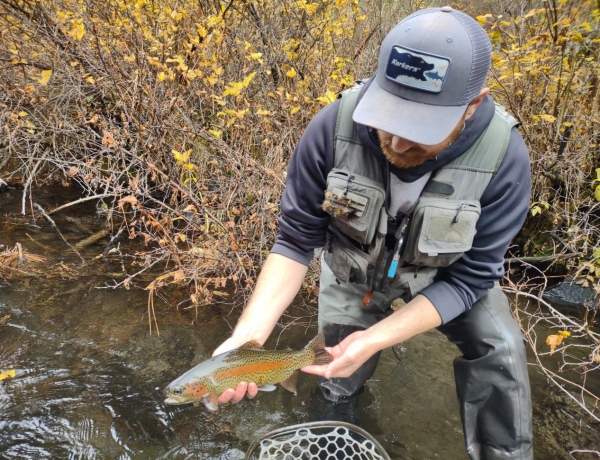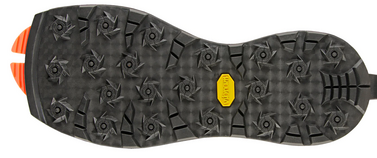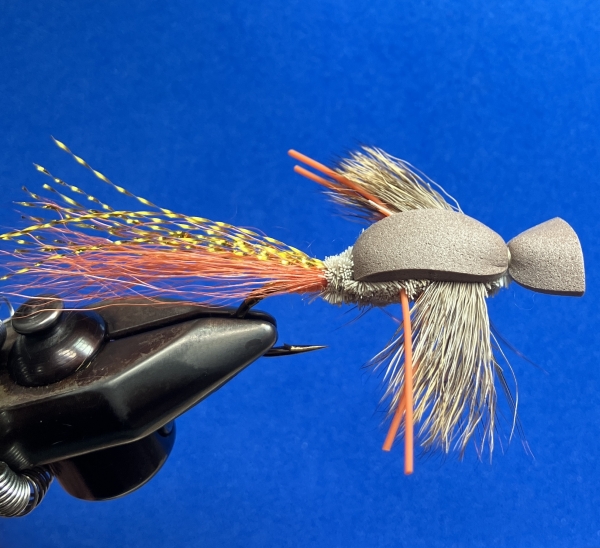There are many applications for deer and elk hair in fly tying. You can spin it, tie it in, put it in a dubbing loop, and more depending on how adventurous you want to be. Many flies that are staples in central Oregon utilize deer and elk hair. Not all hair is the same though, and choosing the right hair can really affect the quality of your patterns. The main thing is that the more hollow the individual hairs are, the more they will flare out. There is actually a pocket of air within each fiber that makes the hair bouyant, so more hollow hairs will have better floatability. The more hollow it is, the more it will flare as well. Deer hair from other parts of the animal, such as x-caddis hair, can be much less hollow and does not flare out as much. This is good for smaller, sparser patterns such as the x-caddis or wings on small hopper/yellow sally patterns.
Elk hair is much coarser and flares less than deer hair, which gives it good qualities for wings on bigger dries such as salmonfly or green drake imitations. Elk hair is also more durable than deer hair, which makes it good for tails on things like hare's ear nymphs or green drake dries.
Here are the types of deer hair we carry at the shop:
Deer Belly Hair
Deer belly hair flares really well and so is used in flies like deer hair poppers, or some streamers with spun deer heads. Deer belly hair has tips that are generally very uneven and ragged so you wouldn't use it for things that call for evenly stacked tips like comparaduns or elk hair caddis.
Deer Body Hair
Deer body hair is similar to deer belly hair but is just a bit more thinner and dense. This hair is used commonly in spun deer hair heads (sometimes called bullet heads) for hoppers/stonefly dries, but you can use it for spinning deer hair poppers and heads like you can with deer belly hair. Deer body hair doesn't take dye quite as well so the colors aren't usually as vibrant as you see with the belly hair.
Hopper/Stimulator/Comparadun/All Purpose Deer Hair
These hair types are all very similar as well, but their slight differences lend them to specific applications. They are named pretty literally. Hopper hair is a bit more hollow and flares well, for flies like a Dave's Hopper, with a trimmed spun deer head. Stimulator hair is for wings on big dries, such as the (surprise!) stimulator. Comparadun hair is for, well, comparaduns usually, and it is thinner and shorter and flares a bit less. Usually when tying comparaduns you use the thread/dubbing to prop up the hair since it doesn't flare quite as much as most other hair. All purpose hair is a jack of all trades type of hair. It won't be the very best choice for trout flies that call for deer hair but it will be sufficient on pretty much all of them.
Moose Mane
Moose mane is very stiff and durable. It is mainly used for tails on dries and nymphs, and people will also sometimes wrap bodies with moose mane, like on the mosquito fly pattern. It can be used on steelhead skater flies as well!
Moose Body
Moose body is also stiff/durable, but a little less so than moose mane. It is mainly used for tails on dries and nymphs.
Antelope
Antelope is very hollow and light, and can be used for most of the same applications as deer belly. Antelope is more hollow than deer belly, but it's also less durable so when you're spinning antelope you have to be a bit more careful to not cut the hair with the thread.


